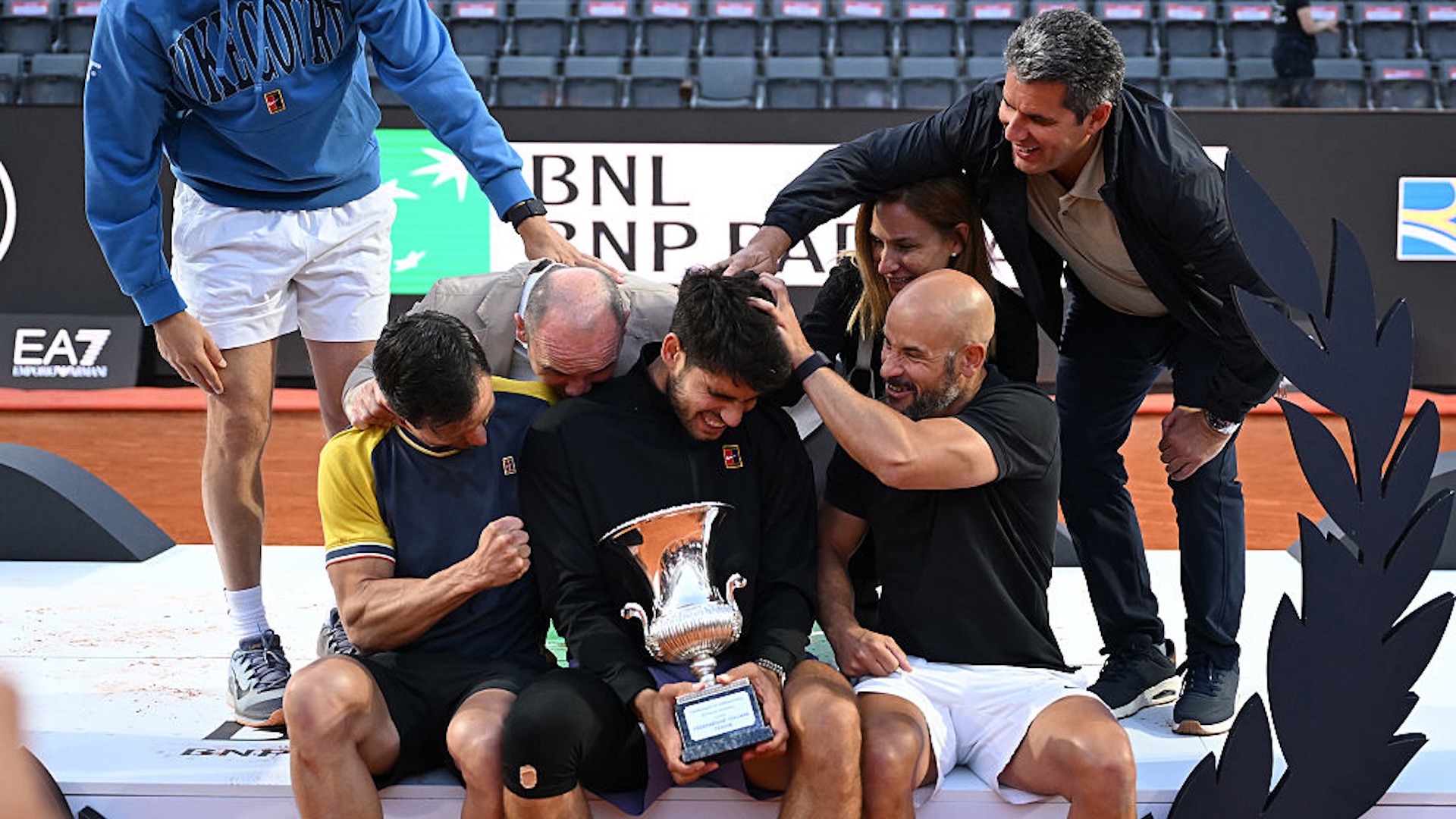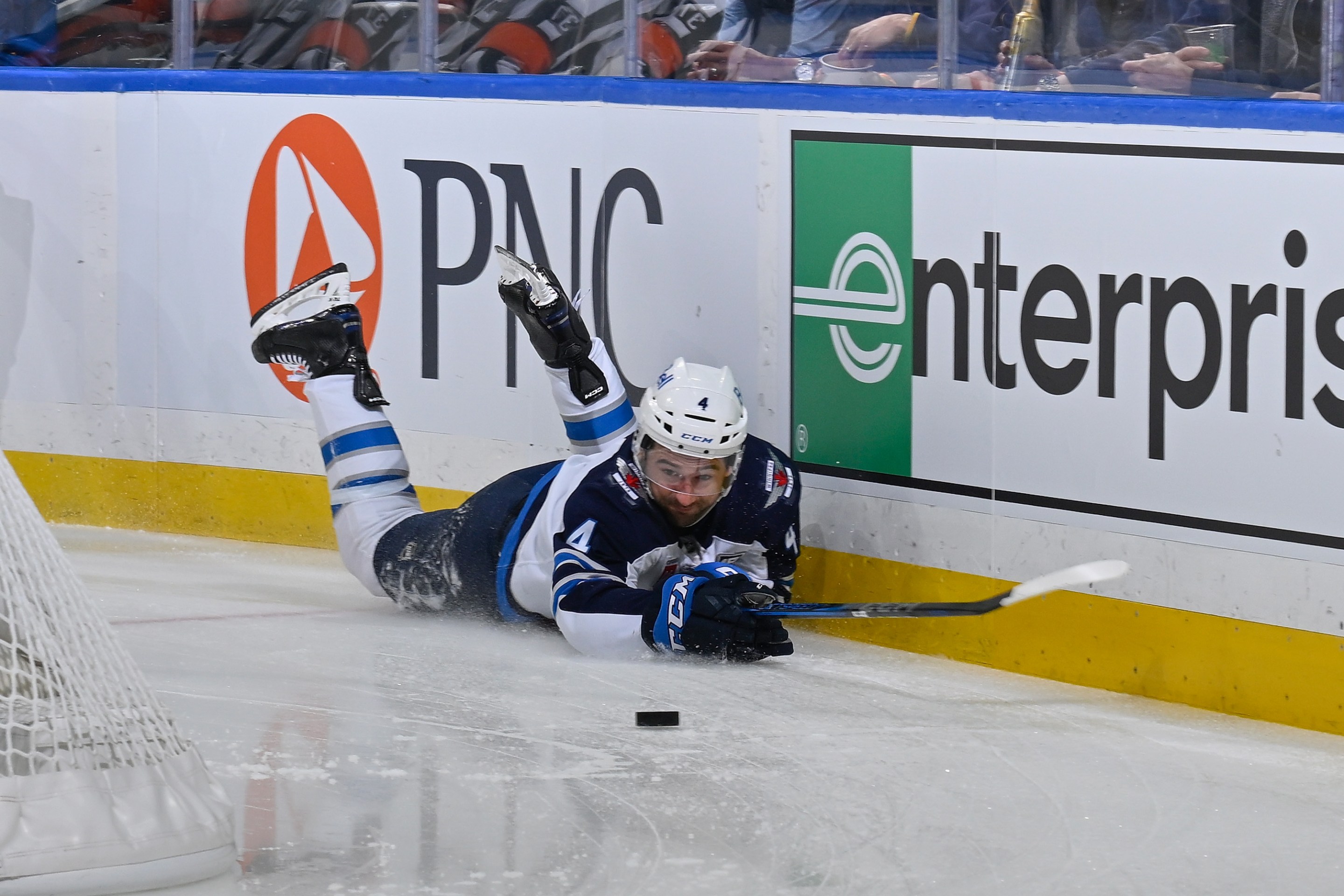Carlos Alcaraz’s shotmaking style is of the gonzo variety: He’ll opt for the unlikely winner attempt whenever possible, even when safe options are available. As a consequence, Alcaraz at his best is among the most viscerally thrilling spectacles in sports. At his worst, he could play against a potted plant and enable convincing arguments that the plant has better court sense. Through six points of his first-set tiebreak with No. 1-ranked Jannik Sinner in the Italian Open final on Sunday, Alcaraz had seemingly heeded his critics and pursued reliable patterns. He opened up a 4-2 lead with a backhand pass just good enough to force an error, then a few big serves sprinkled on top. Very effective, nothing that made the highlight reel.
Then the players switched ends of the court, and Alcaraz couldn’t help reverting to type. He double-faulted. He mashed an errant forehand down the line instead of hitting the appropriate, neutral ball crosscourt. But on set point, Alcaraz conjured a masterpiece. He took immediate control of the point despite Sinner landing a first serve, slashing heavy forehands deep into the court that forced Sinner back. He fired a backhand down the line, stretching Sinner out just a bit, then pranced to the net. While running to his right, Alcaraz chopped his volley short and gentle to his left, working against all his forward momentum. Airborne on the follow-through, his right foot flew up almost to head-height. Nothing about it looked right. It worked perfectly. Alcaraz won the tiebreak with that on-brand brilliance, then tore through the second set, 6-1, to win his first Italian Open title.
Sinner, the world No. 1, had played brilliant tennis in Rome fresh off a three-month doping ban he and WADA settled on following an appeal. (An independent tribunal had previously ruled that Sinner was at “no fault or negligence” for two positive tests for the banned substance clostebol in March 2024.) Sinner quickly slipped into his old, dominant rhythm, reeling off 10 of 11 sets against quality opponents prior to his final with Alcaraz. In his quarterfinal, he beat Casper Ruud, a top-10 player who recently pocketed the Madrid Open title, so badly that Ruud could only laugh. Go ahead and write in the result ahead of time for those two’s next dozen meetings.
Alcaraz, though, put a beatdown of his own on Sinner in the second set of the final. Sinner’s first serve collapsed, enabling Alcaraz to paint increasingly comical curlicues with his footwork on the clay as he worked his magic. A viciously angled backhand sent Sinner rubbing shoulders with the advertisements at the edge of the court. A rally in which Alcaraz was just as far off the court himself saw him recover and crush a backhand winner down the line. A winning lob Alcaraz hit from a gymnastic position should have sent his tendons peeling off the bone and made even Sinner smile. Sinner has easy, natural firepower from both forehand and backhand, but he could only put seven winners past Alcaraz. Carlos occasionally embarrassing himself in pursuit of this standard is excusable simply because he’s always capable of reaching it.
Alcaraz has now beaten Sinner in their last four matches, leads the head-to-head 7-4, and hasn’t lost to Sinner since October 2023. This match snapped Sinner’s 26-match winning streak dating back to the last time Alcaraz beat him, in Beijing, which itself broke a 15-match unbeaten run. Sinner can look essentially invincible at his best, particularly when playing opponents who can’t really hurt him. When he is on one of these runs, it’s tempting to think that he’s put distance between himself and Alcaraz in their matchup as well as the rankings. But Alcaraz brings him down to earth. On Sunday, Sinner won just three of 10 net points, couldn’t break serve, and didn’t look as assured as Alcaraz sliding on the clay. There are areas to improve in that polished game of his, they’re just only visible against one guy.
What’s more striking is that aspects of Sinner’s game that aren’t even weaknesses can appear like flaws against Alcaraz. Sinner plays the more well-rounded, higher-percentage ball, but Alcaraz’s imaginative surges are somehow more reliable in crunch time. This is not supposed to happen—all else being equal, the player with a higher margin of safety in their game is almost always more effective under pressure than the player who has to make unusually difficult shots. Imagine two people racing on tightropes, except one rope is a foot thick and the other an inch thick—the one on the wide rope will move faster thanks to the extra security. Alcaraz is an anomaly that sprints safely over the thinnest high wires.
To turn the tide of the matchup, Sinner might actually have to entertain the same potentially humiliating risks Alcaraz constantly subjects himself to. In the first set on Sunday, Sinner had two set points at 6-5, tried blasting an Alcaraz-esque inside-out backhand on one of them, and missed by a mile. Most likely, Sinner couldn’t simulate a pressure point against a generational talent on the practice court during his three-month layoff and was a bit rusty. But maybe he just thought he had to try to create something out of nothing against this freak of nature, and maybe he was even right. Alcaraz is forcing Sinner to navigate beyond the edges of his enormous comfort zone with the most audacious tennis in the game, creating a magnetic, evolving dynamic. You could read a book about it.
Alcaraz is 15-1 this clay season, and has offered hints that he might have graduated out of his worst walkabouts. In Sinner’s absence, he was under significant pressure to nab the No. 1 ranking and didn’t come close. At the Monte-Carlo tournament in April, he said he now felt rankings were the wrong motivation for him, and wanted to play tennis because he loved it. He won the title.
Then, earlier this week, Alcaraz exacted revenge over Jack Draper, who had upset him at Indian Wells in March. “I think the most important thing I did today was not thinking about the result,” Alcaraz said on court afterward, a somewhat stunning thing to admit about a match against a top-five player who had seriously troubled him in the past. “Not thinking if I was up, if I was down, just trying to do the things that make me happy on the court.” By the end of the match with Sinner, Alcaraz had the time and space to send his varied offensive arsenal wherever he pleased. It looked so fun. What a luxury, to be able to measure professional success with happiness.







